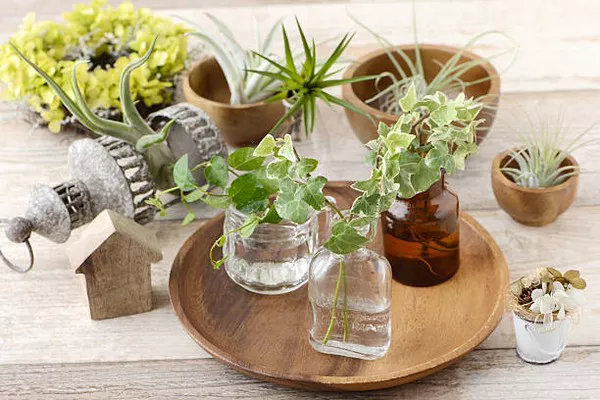Water plants, also known as aquatic plants, add a touch of natural beauty to ponds, aquariums, and water gardens. They not only enhance the aesthetics of water features but also contribute to the overall health of aquatic ecosystems by oxygenating the water, providing habitat for fish and other aquatic creatures, and helping to maintain water quality. However, growing water plants successfully requires careful consideration of factors such as water quality, sunlight exposure, planting techniques, and maintenance practices. In this article, we will explore some essential tips for cultivating thriving water plants.
Understanding Water Plant Types
Before diving into the specifics of growing water plants, it’s important to understand the different types available. Water plants can be categorized into several groups based on their growth habits and habitat preferences:
1. Submerged Plants: These plants grow entirely underwater and play a crucial role in oxygenating the water and providing shelter for aquatic life. Examples include Anacharis, Hornwort, and Vallisneria.
2. Emergent Plants: Also known as bog plants, emergent plants have their roots submerged in water while their stems and foliage extend above the water’s surface. Examples include Water Lilies, Cattails, and Lotus.
3. Floating Plants: These plants float on the water’s surface without anchoring their roots in the substrate. They help shade the water, reduce algae growth, and provide habitat for fish and invertebrates. Examples include Water Hyacinth, Duckweed, and Water Lettuce.
Choosing Suitable Water Plants
Selecting the right water plants for your aquatic environment is crucial for their success. Consider the following factors when choosing plants:
1. Light Requirements: Determine the amount of sunlight your water feature receives throughout the day. Some plants thrive in full sun, while others prefer shade or dappled sunlight.
2. Water Depth: Different water plants have specific depth requirements for optimal growth. Make sure to choose plants that are suitable for the depth of your pond or aquarium.
3. Water Temperature: Consider the average water temperature in your region and choose plants that can tolerate the climate conditions.
4. Nutrient Levels: Assess the nutrient levels in your water feature to ensure they are suitable for the plants you intend to grow. Some plants are more sensitive to nutrient levels than others.
5. Native vs. Non-native Species: Whenever possible, choose native water plants that are adapted to the local ecosystem. Non-native species may become invasive and disrupt native habitats.
Planting and Propagation Techniques
Once you’ve selected the appropriate water plants for your aquatic environment, it’s time to plant them using the proper techniques:
1. Prepare the Planting Site: Clear any debris or existing vegetation from the planting area to create a suitable environment for the new plants.
2. Planting Substrate: Use a suitable substrate such as aquatic soil or gravel to anchor the plants’ roots and provide nutrients.
3. Planting Depth: Follow the recommended planting depth for each type of water plant. Submerged plants should be fully submerged, while emergent plants should have their roots submerged and their foliage above the water’s surface.
4. Propagation: Many water plants can be propagated through division, cuttings, or seeds. Research the specific propagation methods for the plants you’re growing and follow the appropriate steps.
5. Maintenance: Regular maintenance is essential for the health and vitality of water plants. Remove dead or decaying foliage, control algae growth, and fertilize as needed to promote healthy growth.
Water Quality Management
Maintaining proper water quality is critical for the success of water plants and the overall health of aquatic ecosystems:
1. Water Testing: Regularly test the water parameters such as pH, ammonia, nitrite, and nitrate levels to ensure they are within the appropriate range for your plants and aquatic life.
2. Filtration: Install a suitable filtration system to remove debris, excess nutrients, and harmful substances from the water. This will help prevent algae blooms and keep the water clean and clear.
3. Aeration: Proper aeration is essential for oxygenating the water and promoting healthy root growth in water plants. Consider installing aeration devices such as air pumps or water fountains to improve water circulation.
4. Algae Control: Algae can compete with water plants for nutrients and sunlight, so it’s important to control algae growth through measures such as manual removal, biological controls, or algaecides.
5. Water Changes: Regular water changes can help dilute excess nutrients and maintain water quality. Aim to replace a portion of the water in your pond or aquarium on a weekly or bi-weekly basis.
Conclusion
Growing healthy water plants requires careful attention to factors such as plant selection, planting techniques, water quality management, and maintenance practices. By following the tips outlined in this guide, you can create a vibrant aquatic environment that enhances the beauty of your pond, aquarium, or water garden while supporting a thriving ecosystem of aquatic life. Whether you’re a beginner or an experienced aquatic gardener, incorporating these tips into your gardening routine will help you achieve success with your water plants.


